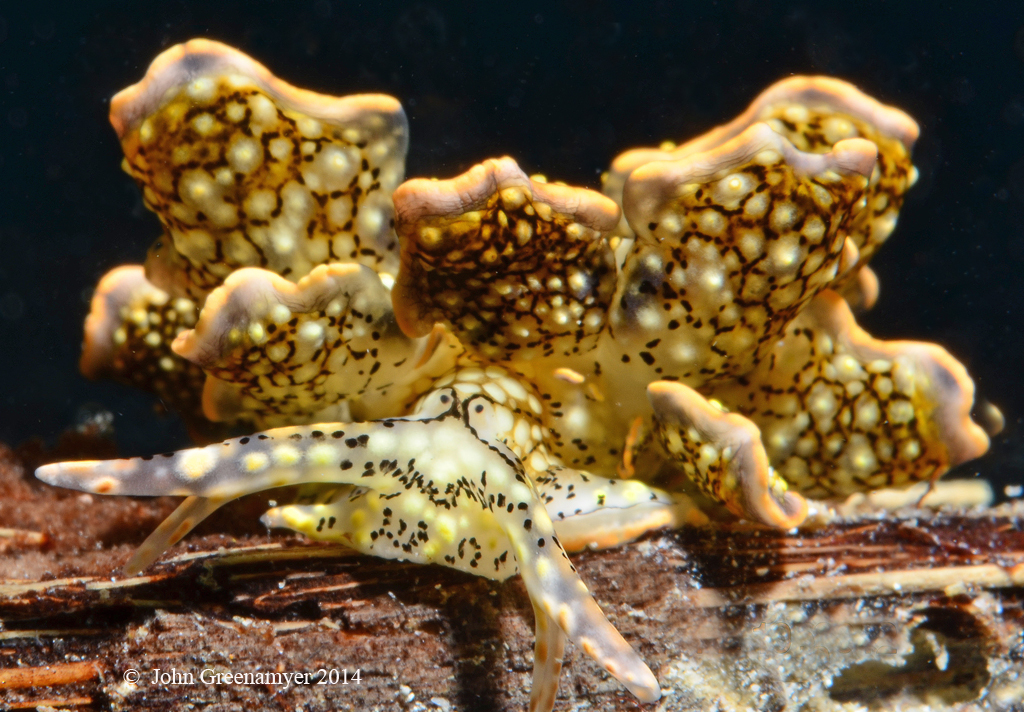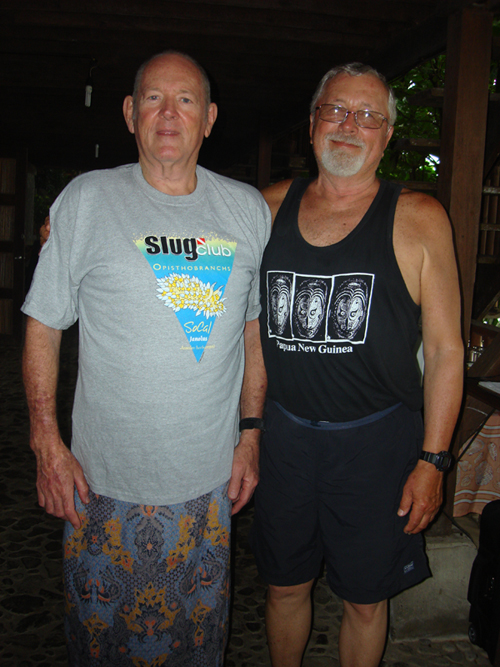 |
Cyerce bourbonica
Image courtesy ofJohn Greenamyer
Sammura, PNG
John at right with Roger Steene
 | Cyerce bourbonica Yonow, 2012 What a great photo by John Greenamyer of this species. Wow. You can really see the deeply divided rhinophores and the eye spots (wait a million years and they may actually function for sight). The cerata are covered with low yellow tubercles surround by a brown reticulated pattern. There is a faint orange and blue marginal band along the edge of the flat cerata, and along the edge of the foot. Although undescribed, this large algae eating sacoglossid (up to 30 mm) has been found in Australia, Indonesia, Papua New Guinea and Guam. WEBMASTER'S NOTES: John Greenamyer has been diving some thirty years with a macro u/w photography pursuit using both still photography and video. His favorite diving areas are PNG and Indonesia with an emphasis on PNG, especially the Milne Bay region so popularized for its "muck" photographic opportunities. On many of these trips, he was in the company of Roger Steene, (late) Neville Coleman and Ali Hermosillo on the CHERTAN! John has been kind of a mentor to me when it comes to super macro sea slug videos! John is also a great supporter of the site and I look forward to diving with him again in the future!
Michael Miller |
Sammamish, WA 98074
Sept., 2014
Send Dave email at davidwbehrens@gmail.com
WEBMASTER'S NOTES A few days after posting, the following came in from Dr. Richard Willan. Evidently our undescribed species does have a name!
"...For your information, this photo shows Cyerce bourbonica Yonow, 2012. It is characterised by its inflated and pustulose cerata whose margins are pale violet-blue with creamy orange patches and black spots. The head has an orange band on either side and black spots on its anterior margin. The body and cerata are marbled pale green and white. Ventrally the propodium and metapodium both bear a row of small black dots, the former anteriorly and the latter marginally and posteriorly. It reaches 20 mm in extended crawling length. It is widespread throughout the tropical Indo-West Pacific Ocean. Here is a link to the full article containing the original description (pages 15-19)..."

|
